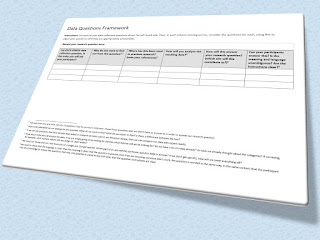For some reason I don't think I have only ever done one post on Likert scales (here). So let's do something about that.
While I assume most of us will know what Likert scales are, we are always best to start with a definition. So they are a type of assessment question "format developed by Rensis Likert" which provide a much more systematic approach for question analysis than a 'phrase completion scale' question, which is where someone provides their own word (Kempf-Leonard, 2005b, p. 53). Data analysis becomes much more difficult when participants have chosen their own responses; while Likert-style standardisation does remove richness, it allows for more comparison. Likert came up with the idea in 1932 when completing his PhD (Sack, 2020).
Likert scales are "used to measure attitudes [and] have an introductory stem consisting of a positively or negatively stated proposition followed by a graduated response key composed of adverbs (e.g., 'strongly') and verbs (e.g., 'agree')" (Kempf-Leonard, 2005b, p. 53). A number can be allocated to each option which allows us to more easily measure the strength of the responses, to weight the answers provided. The most common is for a five point scale may have five points included, or a six point scale may go from five to zero (see the image accompanying this post). Negatively asked questions are often scored in the opposite direction.
If we are putting together a questionnaire, we should try and use the same - or very similar - Likert scales throughout our survey if we can. This is to prevent tiring our surveyees. We only want them to have to think about answering the question, not HOW to answer the question as well.
There are a range of Likert scale anchors ("the descriptors of the various response categories", Kempf-Leonard, 2005a, p. 504) that we can use. A few examples follow:
- Frequency scales are seeking to find how often - or when - participants do something. Questions might be "How often do you read this blog?" with scales such as "always, very frequently, occasionally, rarely, very rarely, never" (Sack, 2020) or "daily, every second day, twice a week, weekly". There are a lot of standard frequency scales (Vagias, 2006).
- Agreement scales ask how much participants agree or disagree with the question or statement (Sack, 2020). "This blog has new content every day", and "Strongly disagree, Disagree, Somewhat disagree, Neither agree or disagree, Somewhat agree, Agree, Strongly agree".
- Importance scales are asking participants for a personal judgement. In some ways this is similar to the next option (quality scales) so phrasing should be careful and well-crafted so as not to be leading (Sack, 2020). Questions such as "Reading the blog every day is..", "Not at all important, Low importance, Slightly important, Neutral, Moderately important, Very important, Extremely important" (Vagias, 2006).
- Quality scales are seeking information about participant standards (Sack, 2020). Questions might be "Blog posts contain good information" These too are very common, and the example image this post is an example: "Excellent, Very good, Good, Fair, Poor, Very poor"
- Likelihood scales ask participants about what is true for them. A seven point scale to answer the question "I read this blog every day", would be "Very untrue of me, Untrue of me, Somewhat untrue of me, Neutral, Somewhat true of me, True of me, Very true of me" (Vagias, 2006).
I hope this is helpful!
Sam
References:
Kempf-Leonard, K. (Ed.). (2005a). Encyclopedia of Social Measurement (Volume 2 F-O, 1st ed.). Elsevier.
Kempf-Leonard, K. (Ed.). (2005b). Encyclopedia of Social Measurement (Volume 3 P-Z, 1st ed.). Elsevier.
Sack, H. (5 August 2020). Rensis Likert and the Likert Scale Method. http://scihi.org/rensis-likert/
Vagias, W. M. (2006). Likert-type scale response anchors. Clemson University. https://www.peru.edu/oira/wp-content/uploads/sites/65/2016/09/Likert-Scale-Examples.pdf















